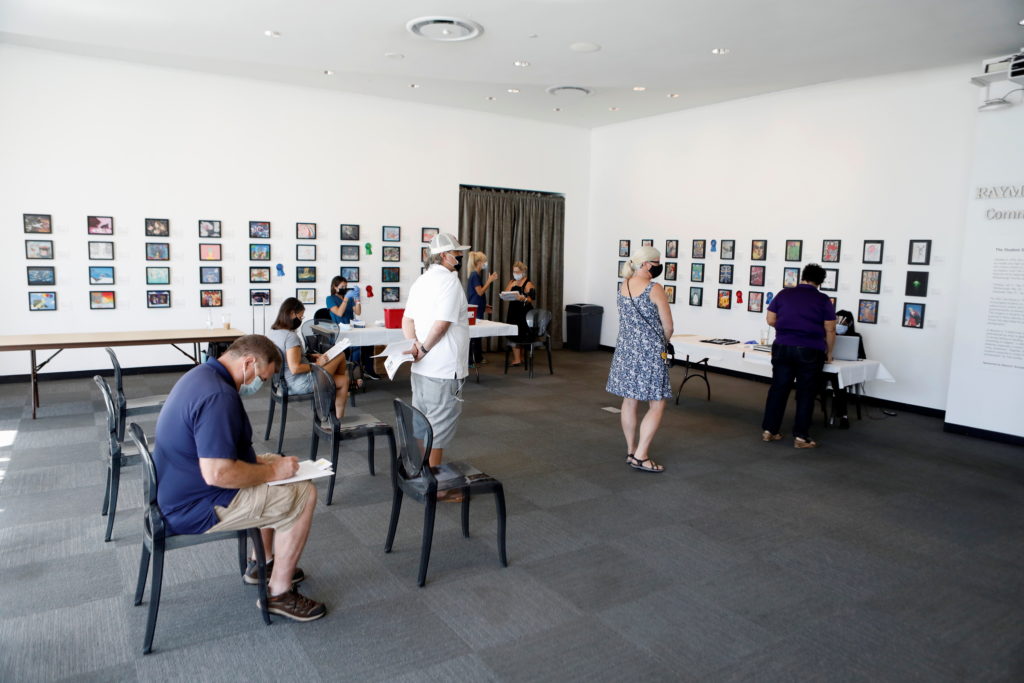FORT LAUDERDALE, Fla. — The U.S. is now averaging 100,000 new COVID-19 infections a day, returning to a milestone last seen during the winter surge in another bleak reminder of how quickly the delta variant has spread through the country.
Health officials fear that cases, hospitalizations and deaths will continue to soar if more Americans don’t embrace the COVID-19 vaccine. Nationwide, 50% of residents are fully vaccinated and more than 70% of adults have received at least one dose.
“Our models show that if we don’t (vaccinate people), we could be up to several hundred thousand cases a day, similar to our surge in early January,” Centers for Disease Control and Prevention director Rochelle Walensky said on CNN this week.
It took the U.S. about nine months to cross the 100,000 average case number in November before peaking at about 250,000 in early January. Cases bottomed out in June, averaging about 11,000 per day, but six weeks later the number is 107,143.

Revelers on Bourbon Street as Louisiana’s coronavirus disease (COVID-19) cases rise amid Delta variant, in New Orleans, Louisiana, U.S., July 23, 2021. Photo by Kathleen Flynn/Reuters.
Hospitalizations and deaths are also increasing rapidly, though all are still below peaks seen early this year before vaccines became widely available. More than 44,000 Americans are currently hospitalized with COVID-19, according to the CDC, up 30% in a week and nearly four times the number who were hospitalized in June. More than 120,000 were hospitalized in January.
The seven-day average for deaths also increased, according to Johns Hopkins University. It rose from about 270 deaths per day two weeks ago to nearly 500 a day as of Friday. Deaths peaked at 3,500 per day in January. Deaths usually lag behind hospitalizations as the disease normally takes a few weeks to kill.
The situation is particularly dire in the South, which has some of the lowest vaccination rates in the U.S. and has seen smaller hospitals overrun with patients.
The Southeast has seen a more than 50% jump in number of hospitalized COVID patients — a daily average of 17,600 over the last week compared with 11,600 to the previous week, the CDC says. Florida, Georgia, Alabama, Mississippi, North Carolina, South Carolina, Tennessee and Kentucky represent 41% of the nation’s new hospitalizations, the CDC says, twice their overall share of the population.
Alabama and Mississippi have the lowest vaccination rates in the country: less than 35% of residents are fully inoculated, according to the Mayo Clinic. Georgia, Tennessee and the Carolinas are all in the lowest 15 states.
Florida makes up more than 20% of the nation’s new cases and hospitalizations, triple its share of the population. Many rural counties have vaccination rates below 40%, with the state at 49%.

People walk across the Brooklyn Bridge together for those who were lost due to coronavirus disease (COVID-19) in New York, U.S., August 7, 2021. Photo by Eduardo Munoz/Reuters.
Republican Gov. Ron DeSantis, while encouraging vaccinations, has said he will not impose statewide mask mandates or other measures. Running for reelection next year and eyeing a 2024 Republican presidential bid, he and President Joe Biden have verbally sparred in recent days. DeSantis has accused the Democratic president of wanting steal Floridians’ “freedoms,” while Biden has said DeSantis should “get out of the way” of local officials if he doesn’t want to fight the outbreak.
In some parts of the U.S., hospitals are scrambling to find beds for patients. Houston officials said some patients were transferred out of the city — one as far as North Dakota.
Dr. David Persse, Houston’s chief medical officer, said some ambulances were waiting hours to offload patients at Houston area hospitals because no beds were available. Persse said he feared this would lead to prolonged respond times to 911 medical calls.
“The health care system right now is nearly at a breaking point. … For the next three weeks or so, I see no relief on what’s happening in emergency departments,” Persse said Thursday.
In Missouri, 30 ambulances and more than 60 medical personnel will be stationed across the state to help transport COVID-19 patients to other regions if nearby hospitals are too full to admit them, Republican Gov. Mike Parson announced Friday.













































